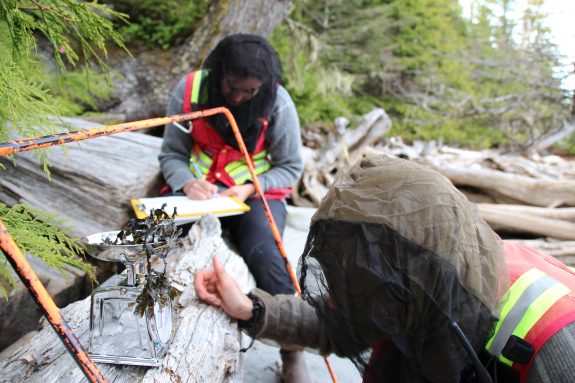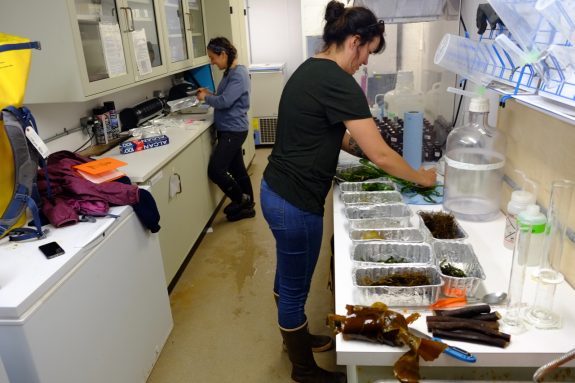A Dry Measurement That’s Worth the Weight
Scientists publish their data to make future research less time-consuming.

Not all science is glamorous. Science often requires repeated, monotonous measurements to test a hypothesis. Weighing clumps of seaweed falls squarely into this category of tedium. Weighing the seaweed over and over again—once when wet, and multiple times until fully dry—is even duller. And yet, day after day, a team of diligent scientists completed this mundane task, so others in the future may not have to.
Water is heavy. When you transfer your wet laundry to the dryer, your damp clothes have gained a kilogram or two. Water weight is an issue for ecologists too. The weight of seaweed straight out of the ocean is drastically different from its weight when dry. This discrepancy can make comparing biomass data across studies a challenge.
“Our main problem was that we were camping in the field without electricity, so we couldn’t dry out our seaweed right away,” says Sara Wickham, who completed the research during her master’s degree at the University of Victoria. “There is also a really common seaweed genus called Desmarestia that has sulphuric acid in its tissues.”
Wickham added that the acid causes it, and any other precious seaweed with it, to rapidly disintegrate before you can get them back to the lab to weigh the samples.

The scientists set out to see if there was a consistent relationship between the wet weight—that could be easily measured in the field with a portable scale—and its standardized dry weight after three or more days in the oven.
While the ratio naturally varied depending on species and what part of the vegetation was measured, the scientists, somewhat surprisingly, found a clear, linear relationship between the wet to dry weight within most groupings. This is almost unheard of simplicity compared to the normal, messy relationships commonly found in nature.
“We originally did this because we needed these wet to dry [weight] ratios for our own analysis. But we thought the surprisingly clean relationship would be useful information for other scientists,” says Wickham, who added that they decided to publish their ratios to spark a conversation that could encourage the research community to produce a database of similar information.
“With these ratios, scientists can just get the wet weight in the field,” says Wickham.
All of these time-consuming measurements were done for a noble purpose—so future scientists won’t have to go through the trouble.
“It was just a long and boring process,” says Wickham.
Science may not always be glitzy, but thanks to these researchers, it might’ve gotten a little less monotonous.

